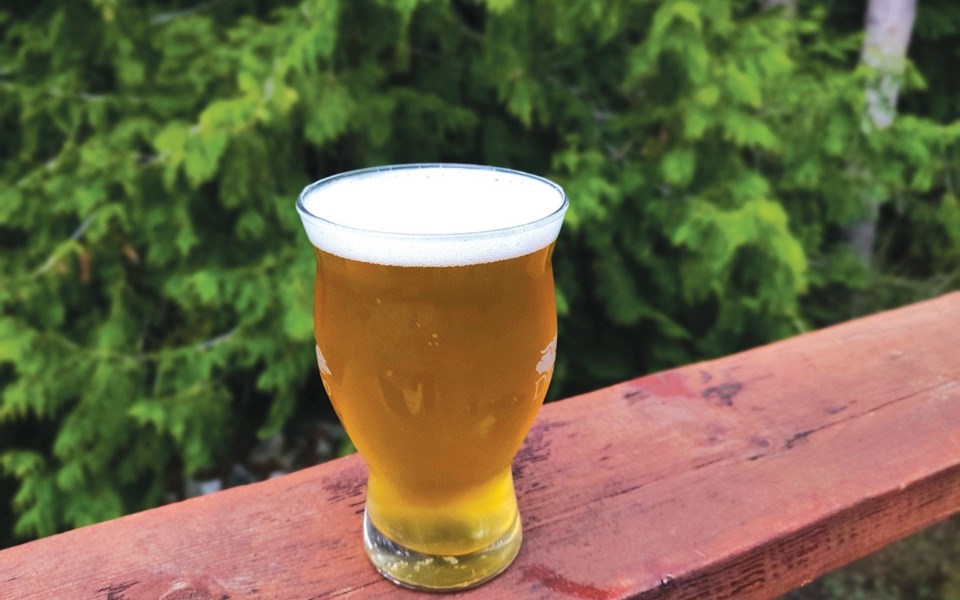First, to be clear, the following column is not a guide on how to make your quarantine time the most productive, fulfilling, rewarding or some other gerund. For those common tropes, you may look no further than your social-media feeds. I don't know about you guys, but I've about had my fill of bored influencers posting home workout videos or their latest attempt at baking sourdough.
No, this week's not-so-outside-Outsider is a theme I've visited a few times before, mostly in the fall months when people are holed up waiting for the unrelenting rain to turn to snow: diversification. An-eggs-in-many-baskets approach.
When I made the choice of lifestyle over career and decided to settle in Whistler, I inevitably put a lot of stock into the mountain sports. Skiing is life. Biking is life. Mountains... are life. The longer I live here, the greater the cumulative dividends as a result of those choices.
But there are dips in this stock market as well. Remember December 2019, when we all thought the worst-season-ever was about to tighten its stranglehold? Or the winters that were a complete wash due to the storms being a few degrees too warm? And let's not even get started on injuries... At least those crappy seasons (somewhat, hopefully) prepared us for hunkering down for a few months and not losing our collective minds.
Excessive screen time has become a lot more socially acceptable during the pandemic, understandably. But regardless of what we need/want to brag about on our social feeds, it is nice to have something to show after spending so many days in a row at home. So I'll share what has become my favourite and (arguably) most productive stay-at-home activity: brewing beer. It actually isn't that hard to make your own, providing you pay attention to the details.
When most people think of homebrewing, images of those cookie-cutter, brew-in-a-can kits on supermarket shelves come to mind. Coopers Kits are the climbing gym of brewing. Unless you prefer the taste of bland, watered-down beer, I'd suggest you skip this option and move straight to extract-and-grain brewing.
Extract-and-grain is the top roping of brewing. It's a great way to try it in your home and dial in your process without overinvesting in a bunch of equipment. Because extract-and-grain shortcuts the mashing process and starts with a bag of dry extract or an ice cream bucket of malt syrup, you can knock out a batch in less than three hours. I brewed in this way for the first 12 months and made some pretty good tasting batches, many of which worked out to a per-unit cost of about $1.50 per 650 millilitre bottle. A friend of mine supplied beer for his entire wedding using this method.
The equipment to get started needed is quite basic and I'll leave it to your Google research for the complete list, but the voluminous items (for those worried about storage) are a stock pot (approximately 18 to 20 litres capacity), a food-safe bucket with a lid and airlock (approximately 25 litres capacity) and two cases of 650 ml bottles. Homebrew supply stores sell these items as a starter kit for less than $150 (not including bottles), or you can pick up gear second hand for around half that. There are always starter kits available on the Vancouver/Sea to Sky Craigslist sites.
After trying a few extract-and-grain batches, you'll likely come to one of the following conclusions:
• This is providing me with decent beer with a moderate amount of time commitment and money invested into equipment. I think I'll keep doing it.
• This is too much trouble. I think I'll sell my kit and go back to purchasing craft beer.
• I got the bug and I want to make better beer.
If you want to level up, it's time to look at the all-grain method. This is the lead climbing of home brewing. It requires another round of investment into equipment (lots of great articles online to get started there as well) and your brew day can take upwards of four to six hours. But the creative control you gain and the improved economy on ingredients makes it well worth it. You can start cloning your favourite craft beers, put your personal spin on a classic recipe or invent your own. It does require a bit more storage space, but I was able to all-grain brew in a two-bedroom apartment for a couple of years without issue, thanks to my roommates being cool with me taking over the kitchen on brew day.
Rainy days and quarantine are a bummer, but if I have grain, water, hops and yeast in the house, I know I can make the most of a day inside. If you're willing to give this hobby a shot, let me offer a few tips to avoid the mistakes I made early on:
• Keep your kit clean and sanitize everything before using.
• During fermentation, temperature is everything. Try to keep your fermenting beer as temperature-stable as possible and make sure temps are safely in the yeast's happy zone of 18 to 22 degrees C for ales and 10 to 12 degrees C for lagers.
• Keep recipes simple to start. Try a few pale ales first to dial in your process before trying anything more complicated.
• Stay patient. Rushing a batch out will always compromise your beer.
• Always go conservative when carbonating your beer in bottles. They can and will explode if not stored correctly!
Hope you're all finding new ways to keep busy. Everything in moderation.
Vince Shuley would like to thank two of his homebrew mentors for their wisdom: Jeff Thomas and Kevin Winter from Coast Mountain Brewing. For questions, comments or suggestions for The Outsider, email [email protected] or Instagram @whis_vince.




